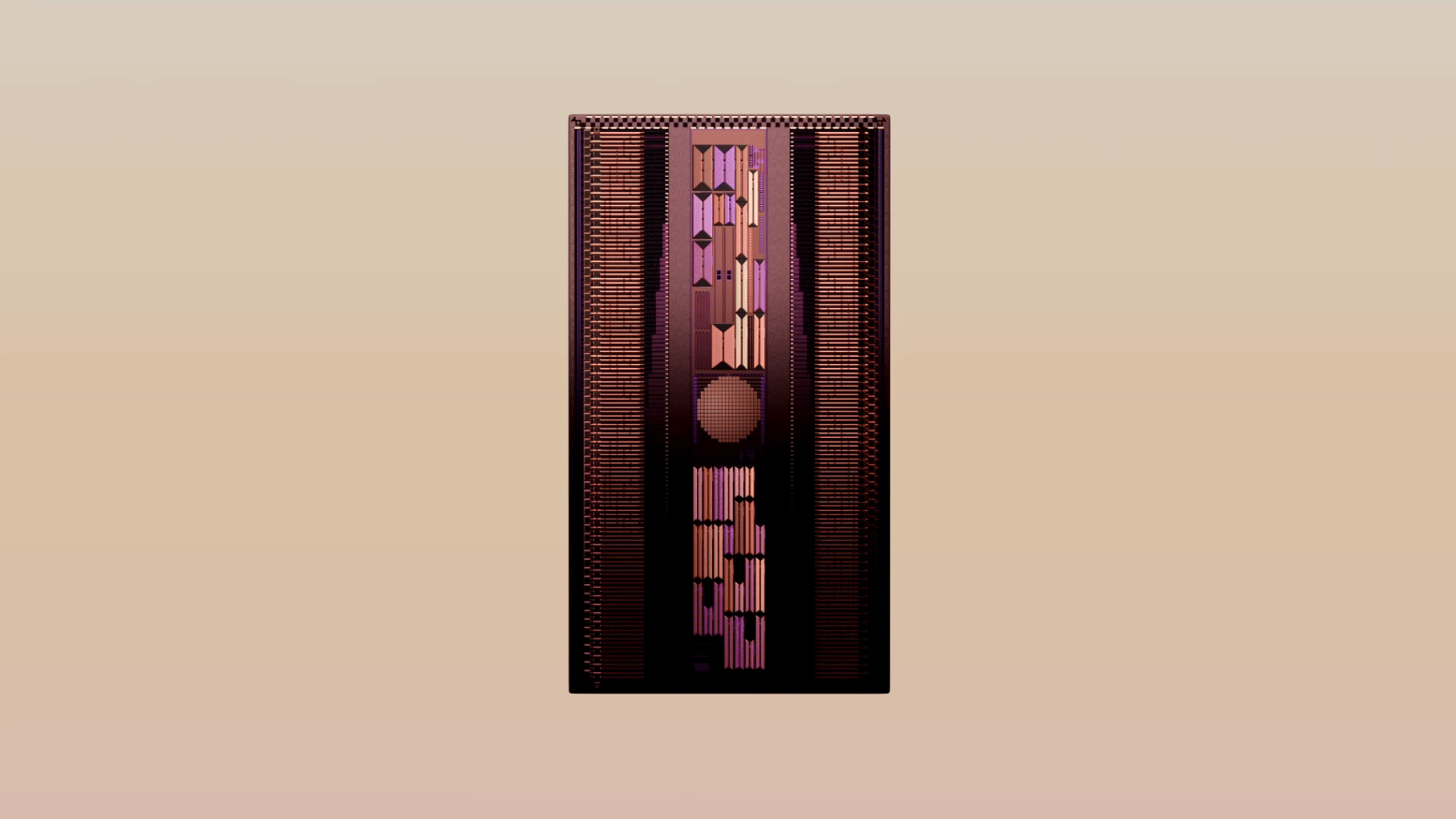Google's newest moonshot delivers internet by firing lasers through the air — Taara project upgrades to tiny 13mm photonic chips placed 1km apart
Say goodbye to underground fiber optics, now get your light-based internet above ground

Taara, Google's quirky underdog project of the day, seeks to fire internet signals using light beams across long distances above ground, an innovation over fiber optics, radio signal, and satellite reception. Developed by X, Google's go-big-or-go-home research wing, the Taara project has announced that it has downsized its reception/output terminals from the size of a traffic light to a 13mm silicon chip.
X, the moonshot factory (a subtitle only slightly more humble than "X, the everything app"), has been developing Taara for the last seven years as a replacement for fiber optic internet cable. Mahesh Krishnaswamy, Taara's general manager, shared in yesterday's announcement, "Fiber is high-speed connectivity's gold standard, but it's often unsuitable because it's costly, impractical, or geographically impossible." For those unable to dig for fiber, or in dense population centers where Starlink is less effective, Taara hopes to step in.
Taara's Lightbridges, the project's first-generation release, can fire beams of non-visible light capable of sending data at up to 20 Gbps up to 20km away. The original bridges mount onto cell towers, measuring 2.5 ft tall. Much of this volume is filled with mirrors and sensors to self-calibrate against a bridge's matched pair. With the new Taara chip, which shrinks the bridge down to the size of a fingernail, the mechanical alignment process is replaced with software that has allowed researchers to transmit data at 10 Gbps over 1km outdoors.
"Our team imagines a future where connectivity isn’t bound by cables or constrained by cost," Krishnaswamy continues. "By dramatically reducing the size and complexity of our systems, our aim is to eventually drastically reduce the cost of connectivity, creating a network effect within the industry."
Not just content to steal Elon Musk's favorite letter, X researchers hope to compete against Starlink for use cases necessitating non-standard internet connections. Taara was originally born out of Google's Project Loon, a now-shuttered project based on creating a network of hundreds of weather balloons transmitting internet connections. Taara, as a more practical terrestrial solution, avoids some of the traps of satellite connections, such as lower speeds in urban centers, while still having some quirks of its own (anything from misty weather to passing birds could temporarily interrupt the light beam firing your internet).
To Taara's credit, the technology has proven quite successful in the real world. Taara's Lightbridges have already been successfully deployed across the planet, serving Caribbean islands whose undersea cables snapped, Indian urban centers waiting for 5G support, and a host of other scenarios.
Taara's next step is continuing to iterate on the new Taara chip design, planning "to extend both the chip’s range and capacity by creating an iteration with thousands of emitters." The future beyond that? Pushing above-ground light-based internet as the future of internet connectivity, supplanting radio wave-based connections entirely. After all, the 5G airwaves are getting crowded, but there is "near-infinite bandwidth" in the space between infrared and visible light.
Get Tom's Hardware's best news and in-depth reviews, straight to your inbox.
With Google's track record of prematurely killing off promising projects, we can only hope Taara survives long enough to live up to these lofty aspirations. Still, for every Stadia that dies in a fiery inferno, there is a Waymo that survives to drive another day. If Taara can cut the mustard, we'll be excited to see how it shakes up internet connections. Maybe Google's research wing can redeem the letter "X" after all.

Sunny Grimm is a contributing writer for Tom's Hardware. He has been building and breaking computers since 2017, serving as the resident youngster at Tom's. From APUs to RGB, Sunny has a handle on all the latest tech news.
-
bit_user Reply
How is alignment done purely in software? With light, you can't do this stuff by beamforming. Are they using MEMS?The article said:With the new Taara chip, which shrinks the bridge down to the size of a fingernail, the mechanical alignment process is replaced with software that has allowed researchers to transmit data at 10 Gbps over 1km outdoors.
Right. For a lot of reasons, fiber cable isn't going anywhere. This is, at best, a decent temporary/fallback solution. Lasers are pretty good for communicating over long distances in space, though.The article said:Taara, as a more practical terrestrial solution, avoids some of the traps of satellite connections, such as lower speeds in urban centers, while still having some quirks of its own (anything from misty weather to passing birds could temporarily interrupt the light beam firing your internet).
I also wonder about a situation where it's used indoors. Rather than running vast amounts of optical cable inside datacenters, what if you had a certain amount of point-to-point communications via line-of-sight? Maybe this is restricted to certain rooms or compartments, but it could totally change how datacenters are architected.
Oh, you've barely scratched the surface!The article said:With Google's track record of prematurely killing off promising projects ...
https://killedbygoogle.comProbably everyone working in tech that's used any Google projects has gotten burned by them at one point or another. At this stage, I just assume anything coming out of Google will become abandonware, at best. -
mrdoc22 Here in Denmark in 90'ties companys used laser to interconnect there many buildings, way before fiberReply -
Notton That's a very interesting product.Reply
Is the 20km range limited by the atmosphere or the horizon?
With a 30m tower, you can see the horizon from 19.5km away, so if there's another 30m tower, it should easily be visible from further.
I wonder how it handles winds shaking the towers and throwing off the laser alignment. -
bit_user Reply
I think that's why it needed to be the size of a traffic light and contain elaborate machinery to maintain alignment. Note that the new chip-sized transceivers only have a range of 1 km.Notton said:I wonder how it handles winds shaking the towers and throwing off the laser alignment.